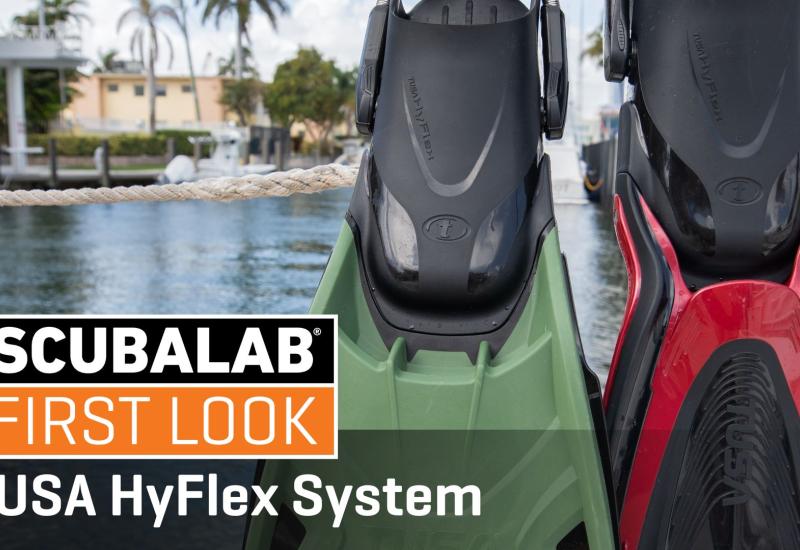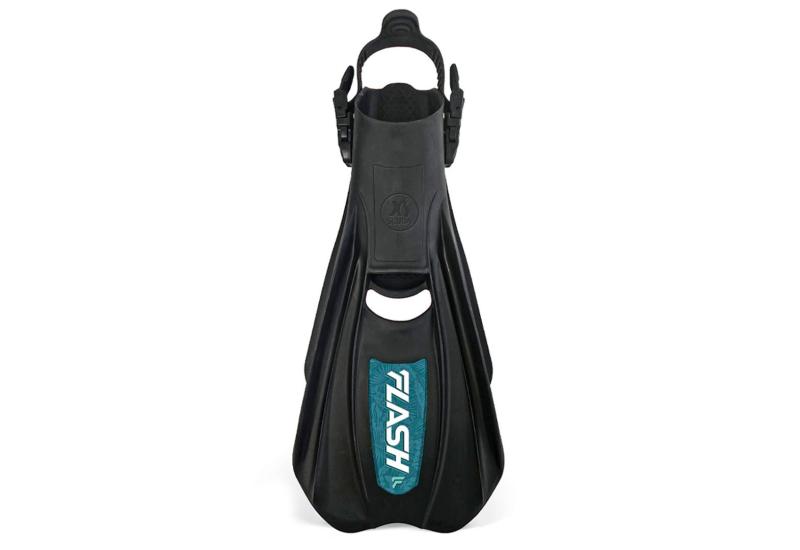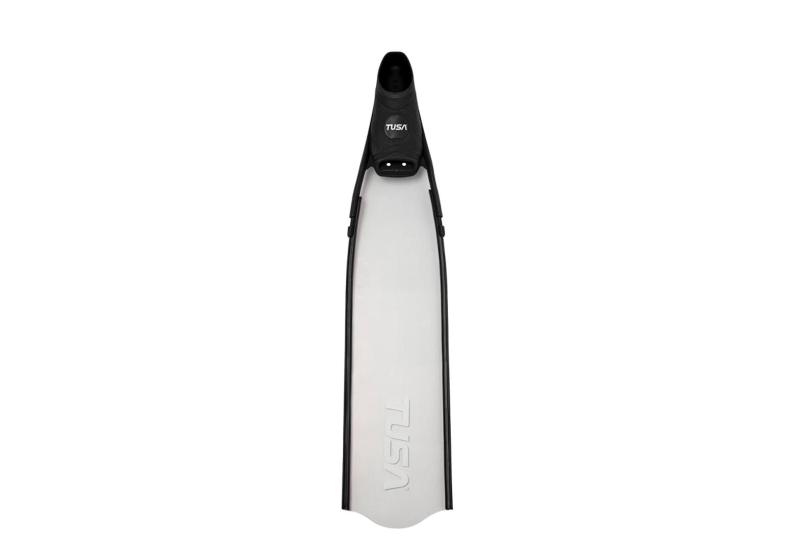2005 Fin Test: Behind the Scenes
Greetings from Capt. Don's Habitat, the site of our 2005 Scuba Lab Fin Test. We're glad you're interested in learning more about how and why Scuba Lab tests fins. We'll also tell you a little bit more about the folks in this picture, our volunteer test divers.
But first, a few well-deserved "Thank Yous" to some honorary members of our 2005 Fin Test Team.
To Jack Chalk, general manager of Capt. Don's Habitat. Jack, the entire staff of the resort, the folks at the dive shop, as well as the crew at Rum Runner's, the on-site restaurant and bar, went out of their way to make our week-long stay easy while we put this year's fins to the test. For more information on the resort visit www.habitatdiveresorts.com/bonaire.
To Ronella Croes, general manager of Tourism Corporation of Bonaire. Thanks to Ronella's personal involvement, our crates of fins and test equipment got through Customs without a hitch--a first in the history of the fin test. Tourism Corporation of Bonaire is the official source for tourism information on what to do and see in Bonaire. Just visit their website at www.infobonaire.com and you'll see why.
What is Scuba Lab? What is a Fin Test?
Scuba Lab is the gear testing wing of Scuba Diving magazine, and the only consumer products testing group that exists solely to serve recreational divers. Our mission is to help you be an informed consumer of dive gear. We do that by conducting impartial evaluations of dive gear using both objective measures of performance and extensive in-water evaluation by multiple test divers.
Our annual Fin Test project is a standard Scuba Lab evaluation of dive fins--it just happens to be the biggest, the most expensive and the most labor-intensive review process we have. But it's also the most fun.
Every year we take a team of volunteer test divers to a warm-water destination for a week. This allows us to use multiple test divers for every piece of data we gather on fins, from speed and thrust measurements, to general test diver comments on how the fins feel, fit and function in everyday use.
Managing this process is a big job that falls to the Scuba Lab staff--Director John Brumm, and data collection supervisors John Francis, Bill Kendig, Val Hodges and Vicki Durst. They do an incredible job of organizing the fins, the fin test divers and making sure everything stays on track.
How We Test Fins
We chose Capt. Don's Habitat as our host resort for the 2005 Fin Test for several reasons, not the least of which was the unlimited 24-hour-day shore diving available right off the walk-in dive dock. The shallow sandy zone between the dock and the "house reef" was the ideal area for us to conduct our speed, thrust, maneuverability and efficiency course measurements. The dock gave us plenty of room to lay out crates of fins. It also meant easy access to the dive shop so test divers could swap out fins, get new slates, change tanks and stay hydrated between runs.
Objective Performance Tests
Each morning we split our divers into different teams and sent them out to gather objective performance measurements (click here for full test protocols):
Speed
One team used digital underwater speedometers to measure the top sustained speed they could achieve with each fin.
Thrust
Test divers swam against a rigid harness that was anchored to the dock while Scuba Lab staffer Bill Kendig recorded the thrust generated using a calibrated scale. This required Bill to stay submerged all morning, every morning. Ever the multi-tasker, Bill took advantage of the opportunity to field test several full-face masks.
Maneuverability
We staked out a zig-zag course in the sand and had test divers follow it out and back, timing themselves with digital stopwatches as they went.
Efficiency
We measured a straight-line course and had divers swim at their highest natural kicking cycle for a length of 65 feet. Divers timed themselves with digital underwater stopwatches.
Ergonomic Tests
When the morning's work was done, we took a refreshing dip in the pool and took a lunch break before we were back on the dive dock. Each afternoon, we loaded up one of the resort's dive boats for two tanks of afternoon diving and what we call our ergonomic tests.
Ergonomics is just a fancy word for how fins feel, fit and perform in everyday use. Each diver was assigned a different pair of fins for each dive. And while they explored world-famous dive sites such as Capt. Don's and the Hilma Hooker, they were also evaluating the fins in 10 different ergonomic categories. Each pair of fins came with a slate and a scorecard pre-printed on waterprooof paper. The card also had room for each test diver to record their comments, and we publish a sampling of those comments with each individual fin review. (click here for full details on the ergonomic tests.)
Sunsets and Surface Intervals
We work our test divers pretty hard during the week, but there's time for some fun, too--both in the water and topside. After a full day of test diving (and an appropriate surface interval of course) you could find some of our divers hooking up to another tank for late afternoon reef exploration or prepping lights and cameras for a night dive.
We enjoyed great dinners with an unrivaled view of the Caribbean from the resort's covered dining area. And there was no better place or way to search for the "green flash" at sunset than at the Deco Stop bar.
Toasts were offered and stories told. Friendships were forged and memories were made. And like all good dive trips, it was over much too soon.
Greetings from Capt. Don's Habitat, the site of our 2005 Scuba Lab Fin Test. We're glad you're interested in learning more about how and why Scuba Lab tests fins. We'll also tell you a little bit more about the folks in this picture, our volunteer test divers.
But first, a few well-deserved "Thank Yous" to some honorary members of our 2005 Fin Test Team.
To Jack Chalk, general manager of Capt. Don's Habitat. Jack, the entire staff of the resort, the folks at the dive shop, as well as the crew at Rum Runner's, the on-site restaurant and bar, went out of their way to make our week-long stay easy while we put this year's fins to the test. For more information on the resort visit www.habitatdiveresorts.com/bonaire.
To Ronella Croes, general manager of Tourism Corporation of Bonaire. Thanks to Ronella's personal involvement, our crates of fins and test equipment got through Customs without a hitch--a first in the history of the fin test. Tourism Corporation of Bonaire is the official source for tourism information on what to do and see in Bonaire. Just visit their website at www.infobonaire.com and you'll see why.
What is Scuba Lab? What is a Fin Test?
Scuba Lab is the gear testing wing of Scuba Diving magazine, and the only consumer products testing group that exists solely to serve recreational divers. Our mission is to help you be an informed consumer of dive gear. We do that by conducting impartial evaluations of dive gear using both objective measures of performance and extensive in-water evaluation by multiple test divers.
Our annual Fin Test project is a standard Scuba Lab evaluation of dive fins--it just happens to be the biggest, the most expensive and the most labor-intensive review process we have. But it's also the most fun.
Every year we take a team of volunteer test divers to a warm-water destination for a week. This allows us to use multiple test divers for every piece of data we gather on fins, from speed and thrust measurements, to general test diver comments on how the fins feel, fit and function in everyday use.
Managing this process is a big job that falls to the Scuba Lab staff--Director John Brumm, and data collection supervisors John Francis, Bill Kendig, Val Hodges and Vicki Durst. They do an incredible job of organizing the fins, the fin test divers and making sure everything stays on track.
How We Test Fins
We chose Capt. Don's Habitat as our host resort for the 2005 Fin Test for several reasons, not the least of which was the unlimited 24-hour-day shore diving available right off the walk-in dive dock. The shallow sandy zone between the dock and the "house reef" was the ideal area for us to conduct our speed, thrust, maneuverability and efficiency course measurements. The dock gave us plenty of room to lay out crates of fins. It also meant easy access to the dive shop so test divers could swap out fins, get new slates, change tanks and stay hydrated between runs.
Objective Performance Tests
Each morning we split our divers into different teams and sent them out to gather objective performance measurements (click here for full test protocols):
Speed
One team used digital underwater speedometers to measure the top sustained speed they could achieve with each fin.
Thrust
Test divers swam against a rigid harness that was anchored to the dock while Scuba Lab staffer Bill Kendig recorded the thrust generated using a calibrated scale. This required Bill to stay submerged all morning, every morning. Ever the multi-tasker, Bill took advantage of the opportunity to field test several full-face masks.
Maneuverability
We staked out a zig-zag course in the sand and had test divers follow it out and back, timing themselves with digital stopwatches as they went.
Efficiency
We measured a straight-line course and had divers swim at their highest natural kicking cycle for a length of 65 feet. Divers timed themselves with digital underwater stopwatches.
Ergonomic Tests
When the morning's work was done, we took a refreshing dip in the pool and took a lunch break before we were back on the dive dock. Each afternoon, we loaded up one of the resort's dive boats for two tanks of afternoon diving and what we call our ergonomic tests.
Ergonomics is just a fancy word for how fins feel, fit and perform in everyday use. Each diver was assigned a different pair of fins for each dive. And while they explored world-famous dive sites such as Capt. Don's and the Hilma Hooker, they were also evaluating the fins in 10 different ergonomic categories. Each pair of fins came with a slate and a scorecard pre-printed on waterprooof paper. The card also had room for each test diver to record their comments, and we publish a sampling of those comments with each individual fin review. (click here for full details on the ergonomic tests.)
Sunsets and Surface Intervals
We work our test divers pretty hard during the week, but there's time for some fun, too--both in the water and topside. After a full day of test diving (and an appropriate surface interval of course) you could find some of our divers hooking up to another tank for late afternoon reef exploration or prepping lights and cameras for a night dive.
We enjoyed great dinners with an unrivaled view of the Caribbean from the resort's covered dining area. And there was no better place or way to search for the "green flash" at sunset than at the Deco Stop bar.
Toasts were offered and stories told. Friendships were forged and memories were made. And like all good dive trips, it was over much too soon.









